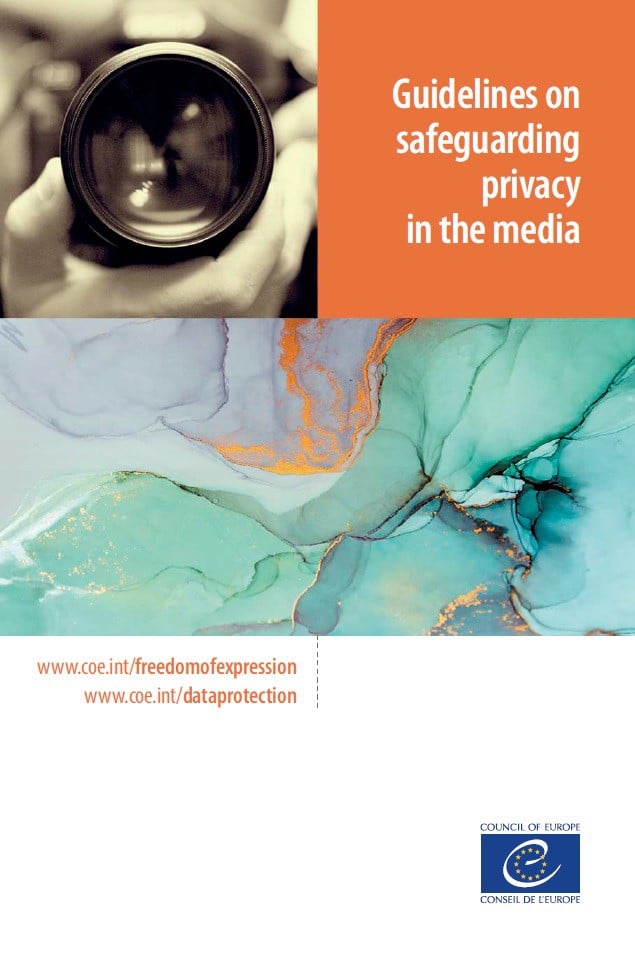



These guidelines comprise a collection of standards of the Council of Europe and the European Court of Human Rights concerning the protection of privacy of public figures and private individuals in the media. They also include data protection principles based on various regulatory instruments and best practices.
The guidelines aim to help journalists and other media professionals with the practical application of the mentioned standards to the individual ethics-related dilemmas.
1. INTRODUCTION
2. FREEDOM OF EXPRESSION, THE ROLE OF THE MEDIA AND RESPONSIBLE JOURNALISM
2.1. Freedom of expression
2.2. Media as public watchdogs with rights and responsibilities
2.3. Responsible journalism v. tabloid journalism
3. PRIVATE LIFE AND CONDITIONS FOR PUBLISHING PRIVATE MATTERS
3.1. Private life
3.2. Consent
3.3. Public interest
3.4. Framework for balancing the rights to privacy and freedom of expression
4. SPECIFIC ISSUES OF PRIVATE LIFE
4.1. Family, home, property
4.2. Physical and moral integrity
4.3. The right to one’s image
4.4. Correspondence
5. CRIME REPORTING
5.1. General principles
5.2. The right of victims (minor) to protect their identity
5.3. The right to privacy of a presumed paedophile
5.4. Revealing the identity of an investigated police officer
5.5. Suspected persons
5.6. Publishing banal aspects of accused persons
5.7. Persons in custody
5.8. Convicted persons in emotional situations
5.9. Convicted persons released on parole
6. CODES OF CONDUCT AND SELF-REGULATORY TOOLS
7. DATA PROTECTION PRINCIPLES
7.1. The rights of individuals
7.2. Security measures
7.3. Processing of non-editorial content
7.4. Best practices to ensure and demonstrate compliance
8. REFERENCES

These guidelines comprise a collection of standards of the Council of Europe and the European Court of Human Rights concerning the protection of privacy of public figures and private individuals in the media. They also include data protection principles based on various regulatory instruments and best practices.
The guidelines aim to help journalists and other media professionals with the practical application of the mentioned standards to the individual ethics-related dilemmas.
